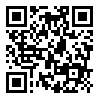Fri, Apr 19, 2024
| فارسی
Volume 5, Issue 2 (2-2011)
bjcp 2011, 5(2): 15-22 |
Back to browse issues page
Abstract: (12789 Views)
Abstract
The aim of this study was to investigate the correlation between thought-action fusion beliefs and the clusters of obsessive-compulsive symptoms in patients with obsessive-compulsive disorder. Based on this construct, the intrusive thoughts can have a direct effect on external events, or obsessional thoughts and negative acts are morally equivalent. The sample of this study were comprised of 60 obsessive-compulsive patients selected through available sampling. Participants completed the Maudsley Obsessive-Compulsive Inventory (MOCI), and the Thought-Action Fusion Scale (TAF). Result indicate that there were positive and significant associations between obsessive-compulsive symptoms and TAFS subscales. Also likelihood for the other was the strongest predictor of obsessive-compulsive disorder and the cluster of checking symptoms.Likelihood for self was the strongest predictor for the cluster of doubting and obsessional thoughts. This study indicates that there is an association between obsessional psychopathology and the subscales of TAF. Thus, it seems that cognitive bias such as Thought-action fusion increases individual vulnerability to obsessive-compulsive disorder. That is, patients with obsessive-compulsive disorder distort the relationship between negative and immoral thoughts and external events. Based on metacognitive theory , because patients try to control and neutralize their thoughts, intrusive thoughts and compulsive behaviors increase.
Type of Study: Research |
Subject:
Special
Received: 2013/11/20 | Accepted: 2013/11/25 | Published: 2013/11/25
Received: 2013/11/20 | Accepted: 2013/11/25 | Published: 2013/11/25
| Rights and permissions | |
 |
This work is licensed under a Creative Commons Attribution-NonCommercial 4.0 International License. |

